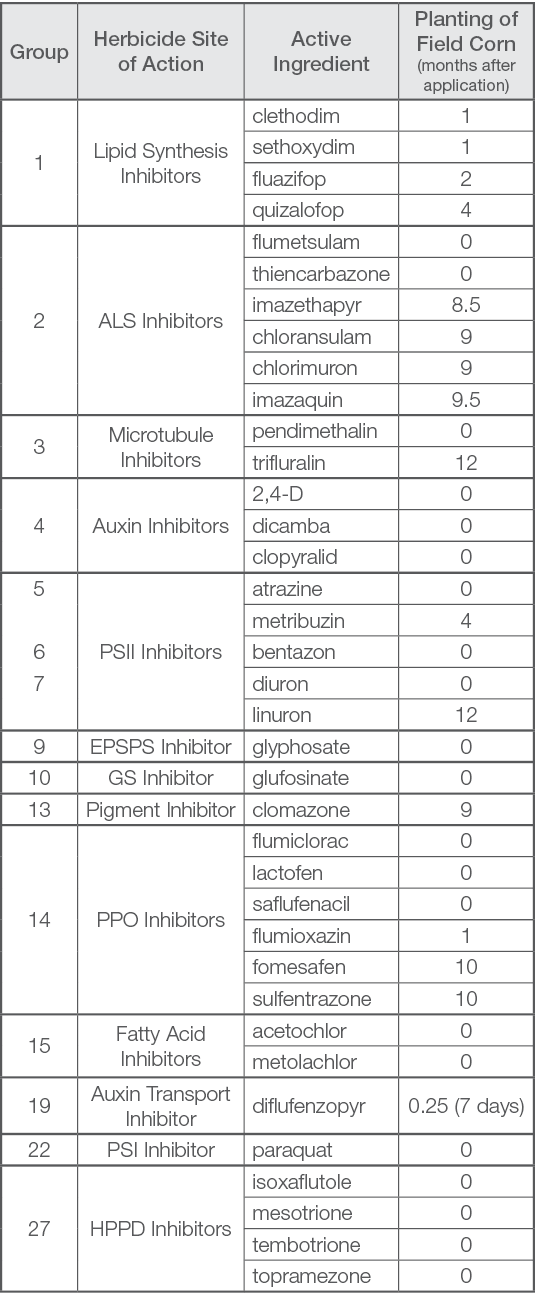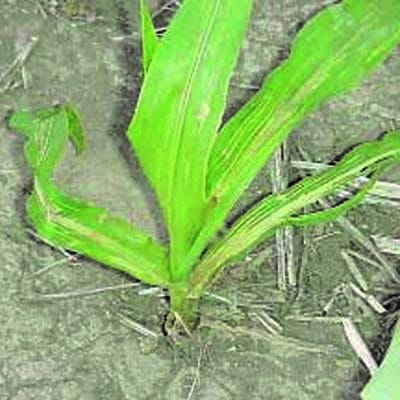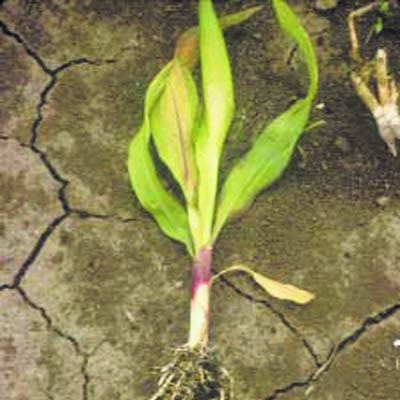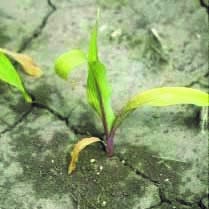April 14, 2022

Soil residual herbicides extend the duration of weed control but can also injure subsequent crops. The major factors affecting the persistence of residual herbicides can be grouped into herbicidal characteristics, soil characteristics, and environmental conditions. An understanding of how these factors interact can help to prevent herbicide carryover problems.
Factors contributing to herbicide carryover
Because of the many interacting factors, there can be variability in how long a herbicide will persist in the soil. A listing of factors influencing herbicide carryover potential are:
Soil characteristics (texture, organic matter, pH)
Environmental conditions
Total amount and distribution of rainfall
Herbicide chemistry and half-life
Herbicide rate and application frequency
Herbicide application date
Rotational crop sensitivity to herbicide
Soil Characteristics
Soils with higher amounts of organic matter (OM) and clay have a higher potential for herbicide persistence or carryover. Herbicides can be adsorbed to the surface of OM and clay making them temporarily unavailable for plant uptake, downward movement in the soil, or degradation. Adsorption is greatest in finer textured soils having a higher percentage of clay particles and in soils with a higher OM content.
Soil pH is another characteristic that can affect herbicide availability and persistence. A high soil pH can cause greater persistence of triazine and sulfonylurea herbicides and shorter persistence of imidazolinone herbicides. Most other herbicides are unaffected by pH and their soil longevity is affected more by other factors.
Environmental Conditions
Weather is usually the driving component of herbicide carryover problems. Degradation of herbicides is usually rapid when there is adequate soil moisture and warm temperatures. The majority of herbicide degradation resulting from microbial activity occurs during the summer and early fall after the herbicide is applied. Under extremely dry conditions the rate of herbicide degradation by soil microbes can be slow enough to allow herbicides to persist into the next season. Cold soil temperatures decrease microbial activity, and moisture during the winter may not increase microbial activity enough to enhance the rate of herbicide degradation. Microbes become more active as soils warm in the spring, but a short time until planting can limit the amount of herbicide degradation that occurs. Late spring or summer herbicide applications combined with dry fall weather and a cold, extended winter can set up the conditions for carryover problems.
Herbicide Chemistry
The herbicide chemistry and half-life (time it takes for 50% of the herbicide to break down) along with the rate of application impacts the persistence of phytotoxic residues in the soil. Herbicides vary in their potential persistence and carryover. Herbicide families with persistent active ingredients include triazines (atrazine), phenylureas (diuron), sulfonylureas (chlorimuron), imadazolinones (imazaquin), dinitroanilines (trifluralin), isoxazolidinones (clomazone), and diphenylethers (fomesafen). Most of the herbicides that have carryover problems have re-cropping intervals of 9-10 months or longer (Table 1). Of the persistent herbicides mentioned, corn is tolerant to atrazine or diuron and can be planted as a rotational crop without any carryover injury concerns. Herbicide carryover problems in a corn following soybean rotation most often involves fomesafen or chlorimuron chemistry products.

An increasing problem has been corn injury from fomesafen carryover (Figure 1). Fomesafen herbicide products are being used in soybeans to help manage tough-to-control weeds like waterhemp and Palmer amaranth, which can result in multiple and late-season applications. Fomesafen is relatively persistent, and when less than average late-season rainfall occurs, the product can carryover into corn as a rotational crop. Dry and cold weather during the fall and winter can reduce herbicide dissipation and contribute to a carryover problem.


Sulfonylurea herbicide products like chlorimuron can also lead to carryover problems in corn (Figure 2). Herbicides with sulfonylurea chemistry are labeled for use on both corn and soybeans. Products in this family may persist in the soil, particularly if soil pH is above 6.8 and post-application rainfall has been limited. Although they have the same general chemistry, different herbicides are used on corn and soybeans, and injury of corn may develop the season following sulfonylurea herbicide application to soybean fields.


Dinitroaniline herbicide products like trifluralin function by inhibiting root and shoot growth. Corn damage can occur due to carryover from an application made the previous season (Figure 3). Pigment inhibitors like clomazone can also carryover to cause corn injury (Figure 4). Shallow planting or stress conditions that slow seedling metabolism can increase the potential for clomazone injury. Damage to corn seedlings the season following an application may occur, especially if soil pH is below 6.0. Affected plants are distinctly white or bleached, and most corn plants recover with new leaves having normal color.
How to minimize the chance of herbicide carryover
Always read the herbicide label and follow crop rotation intervals.
Keep records of which fields received a residual herbicide with dates of application and rates applied.
Make applications early to control weeds and try to minimize late-season applications.
Be careful during application to apply the correct rate and avoid boom overlaps in the field.
If you know conditions are being set up for carryover injury with a persistent residual herbicide, plant the same crop as last year.
Consider tillage in fall and spring to help dilute herbicide residues and encourage degradation.
Maintain soil pH of 6.5-7.0 to reduce herbicide carryover potential.
Source: DeKalb Asgrow, which is solely responsible for the information provided and is wholly owned by the source. Informa Business Media and all its subsidiaries are not responsible for any of the content contained in this information asset.
You May Also Like




